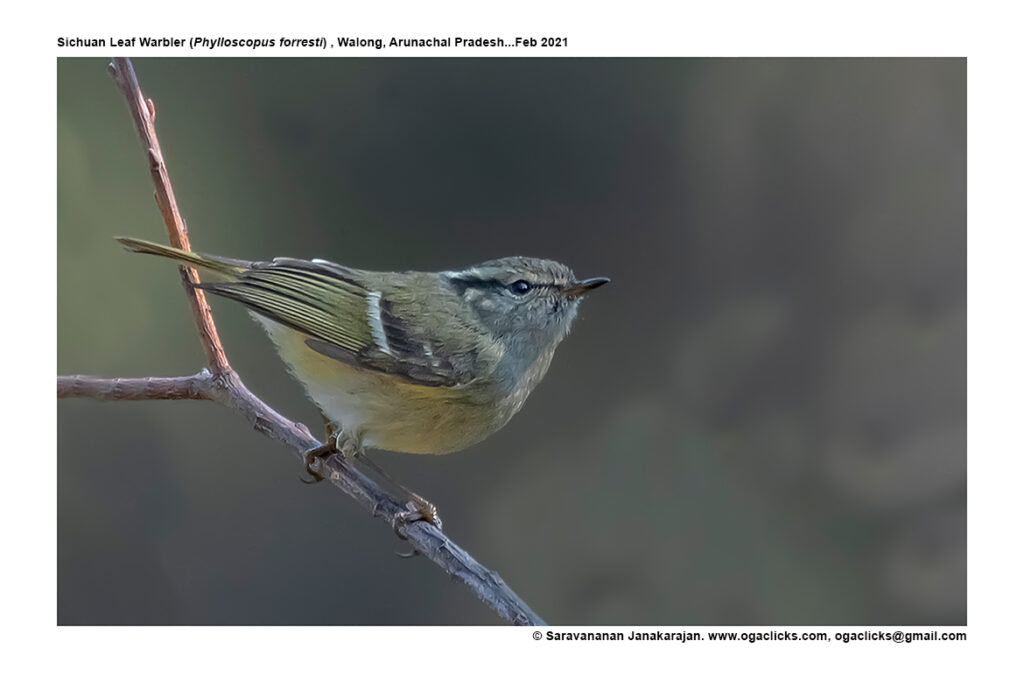
Sichuan Leaf Warbler Phylloscopus forresti
Etymology:
- Phylloscopus : Greek word phullon – leaf; skopos – seeker
- Forresti: George Forrest (1873-1932) Scottish botanist
Distribution: Winter visitor in East Arunachal (Walong)
Details: Size of 9–10 cm. It is a small, “chunky” leaf-warbler with well-patterned plumage. The adult has well-defined pale buffish or whitish median crown stripe, dark olive-tinged brown-grey lateral crown stripe. It has a very prominent supercilium pale dingy buffish with very pale yellowish tinge, becoming whitish posteriorly. It has dark brownish-grey eyestripe usually “hooked downwards” at rear. The ear-coverts are pale buffish or buffy white with some dusky mottling. The upperparts are dark greyish green, with well-defined sulphur-yellow rump. The upperwing is dark brownish grey, remiges are with yellowish-green outer edges except at bases of secondaries forming contrasting dark bar. The tertials with greyish-white tips on outer webs; median coverts with pale tips, greater coverts contrastingly dark with pale buffish of whitish tips .The tail is dark brownish grey, feathers are with yellowish-green outer edges. The chin, throat and underparts are pale buffy white or yellowish white, with slight indication of dusky colour on breast-sides. In the worn plumage duller overall, with less buffish/yellowish tinge, and pale upper wingbar and tertial markings often worn off. The iris is dark brown; bill is blackish; legs are dark brown-grey, sometimes with pinkish tinge.
Habitat: It is found in breeding season in spruce–fir forest, mixed with some broadleaf deciduous and rhododendron forest, in pine or mixed conifer/broadleaf forest. It occurs in 2000–4000 m, in non-breeding season at lower elevations, down to foothills.
Food habits: It eats insects and their larvae. It forages singly; often in mixed-species flocks in non-breeding season. It feeds both high up in canopy and low in understorey. It frequently hovers and performs flycatching in search of food.
Breeding habits: They breed in May–Jun.